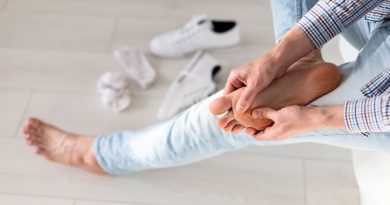The Most Common Treatments for Lymphedema.
Lymphedema, a chronic swelling, is caused by a reduced flow of lymph fluid that results in a buildup. It can result from a poor lymphatic system, lymph node removal, cancer therapies, and a variety of other causes. Those suffering from the condition can become prone to infections as well as intense swelling and discomfort. Here are some of the most common treatments for lymphedema.
Elevation
While this treatment can’t usually be done for extended periods of time, elevating a swelling limb can assist in reducing fluid build-up, easing the discomfort associated with it.
Massage
Massage can reduce buildup by increasing the flow of fluid through the system. A specialized massage technique referred to as manual lymphatic drainage (MLD) assists in fluid being moved through the limb, moving the lymph fluid out the affected limb and stimulating the lymphatic system.
Exercise
Engaging in exercise assists in the flow of lymph fluid throughout the body, reducing the swelling associated with a buildup of this fluid. It also can help strengthen your muscles in general to help you better perform day to day activities. For some, it is beneficial to wear compression garment during bouts of exercise, but this is best decided by a medical professional. Be sure to consult with someone who specializes in lymphedema exercising to ensure you don’t overdo it and you engage in physical activity that is right for you.
Compression and Wrapping
Compression garments can be fitted to work with the individual to offer pressure on areas farthest from the body and lessening closer to the core. Sleeves and stockings are common compression options. It is best to be fitted or at least done under the supervision of a professional to ensure you have the appropriate amount of pressure applied to your body to best assist in keeping the swelling at bay. Websites like LymphedemaProducts.com offer a wide variety of compression garments.
Wrapping is different than compression in that it includes layers of specialty wrap around individual fingers and areas of the limbs such as elbows, ankles, and knees, then layers over the entire area. Some people can do the process themselves once they have been properly trained. However, patients with less dexterity should rely on doctors or other professionals to ensure the wrapping is done properly.
Skin Care
Due to lymphedema’s effect on the skin, proper skin care can reduce the chances of infection by keeping the areas clean and conditioned.
Complete Decongestive Therapy (CDT)
Complete decongestive therapy, or CDT, is a type of treatment for lymphedema that involves a collection of therapies to work together. CDT integrates compression and wrapping, designated exercises, manual lymphatic drainage massage, and skin care to create an environment where the entire body is cared for. This allows the individual therapies to work in conjunction with one another, benefiting the patient as a whole.
Medications
When infections occur in the body, there are antibiotics that may be prescribed to fight off the issue. In some cases, medications can also be prescribed to offer relief from pain. This type of pain relief is often given as a short-term alleviator as opposed to long-term treatment.
It can take a while of trying different therapies before finding the one that best works for you. Consult with a medical professional to find the treatment that can benefit you and fit your particular needs.




